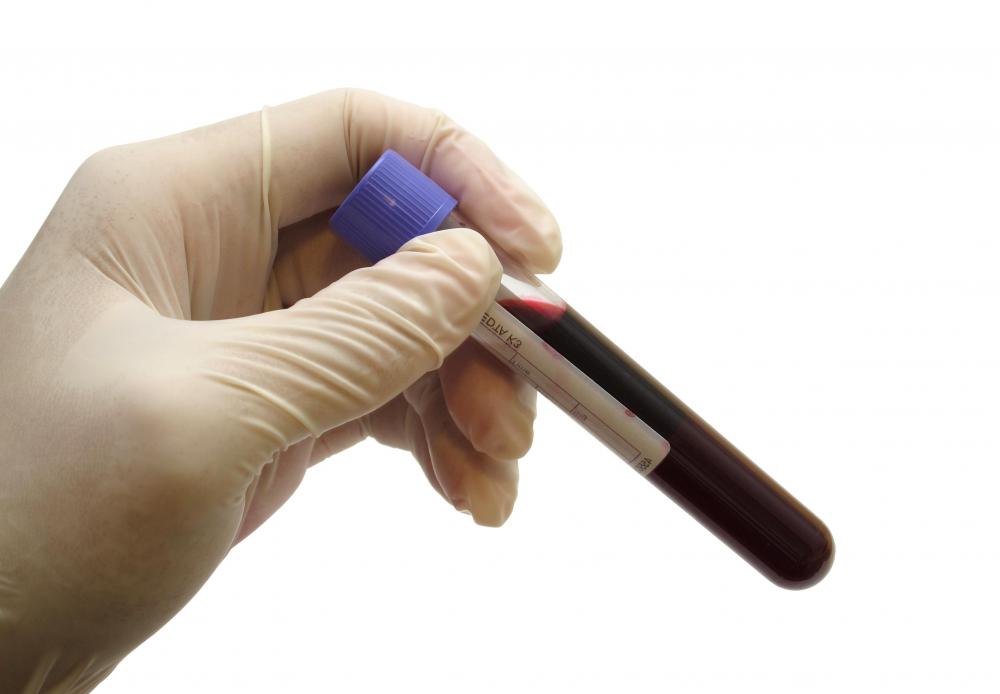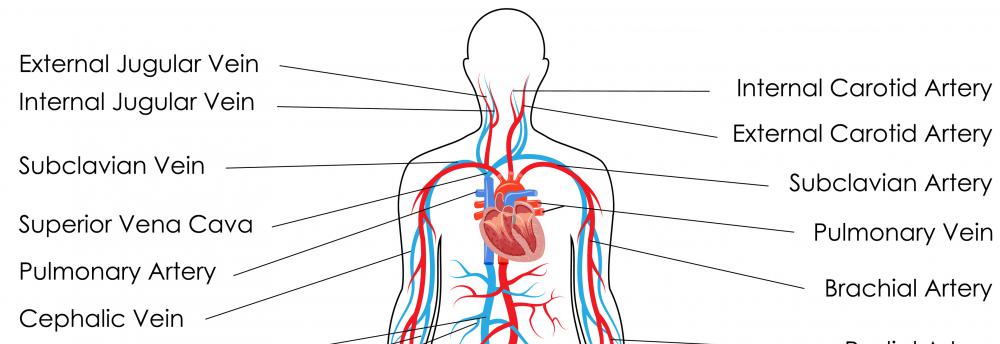At WiseGEEK, we're committed to delivering accurate, trustworthy information. Our expert-authored content is rigorously fact-checked and sourced from credible authorities. Discover how we uphold the highest standards in providing you with reliable knowledge.
What is the Cephalic Vein?
The cephalic vein is one of two main superficial veins in the human arm that extend from the wrist to the shoulder. At the top of the arm near the shoulder, the cephalic vein slides through a groove between the deltoid and pectoralis major muscles. A superficial vein is one that is located close to the surface of the skin. The depth of the cephalic vein varies from person to person. On many people, superficial veins are visible to the eye as a bluish-gray line.
Veins carry deoxygenated blood back to the heart after the exchange of carbon dioxide and oxygen — they are rich with waste and low in oxygen. The blood itself is actually a dark shade of red that is almost maroon. Since the skin refracts light, the vein appears to be a bluish gray. There are valves in the vein that operate like the gates or locks on a canal. They resist the pull of gravity and ensure that the blood always goes in the same direction — flowing back toward the heart.

There are several veins in the arms that form a network with the capillaries to drain the blood back to the heart. The other main superficial vein, the basilic vein, runs parallel to the cephalic vein. Another vein called the median cubital vein forms a connection between the two.
The veins in the arm are the most common places used for extracting blood samples. When a tourniquet is applied to the arm to slow the flow of blood, the vein distends or expands and usually becomes more visible. The cephalic vein is often used in hospital settings to introduce fluids intravenously (IV). Blood samples are usually taken from the median cubital vein.

While the blood in the veins is flowing back toward the heart, the blood in the arteries is moving away from the heart. Ordinarily, they do not intersect. For some people who have severe kidney disease, an artificial connection is made between the cephalic vein and a nearby artery to make the dialysis process easier.
Origins of the word "cephalic" reveal a mixed meaning. The word cephalic comes from the Arabic stem al-kifal, meaning outer, which refers to its position on the arm. In Latin, cephalicus refers to something to do with the head. When the word was translated into Medieval Latin, it was mistakenly translated using the Latin word cephalic.
AS FEATURED ON:
AS FEATURED ON:

















Discussion Comments
For no apparent reason, I had been having pain in the area of my cephalic vein. I had not injured myself at all, and I did not have any strain from typing or overuse. The pain seemed to be radiating from one spot right in the middle of my forearm in the vein.
I am very freaked out by blood clots, since they can kill an otherwise healthy person fast. I went to my doctor and asked him if I was about to die from one. He smiled and told me that blood clots in the cephalic vein stay put. They do not migrate like the ones that form in the legs.
He told me that since there was no danger, I didn’t need any medication. The clot would go away on its own. I felt a little ridiculous for my fear, but I still live by better safe than sorry.
I have kidney disease and may likely one day be a candidate for dialysis. I can see how connecting the cephalic vein to an artery would help the process along, and anything that could make dialysis easier or faster would be great.
I had a coworker with kidney trouble, and he had to go twice a week for dialysis. I think it took several hours, because he would take his laptop with him and watch movies during the process.
Thinking about the potential of needing dialysis scares me, but it’s good to know that science is always advancing and finding new ways to improve methods, like connecting the cephalic vein to an artery. Small things like this give me hope.
I have noticed blue veins in my forearms before, but I never really looked until after reading this. The vein really does appear at different spots all the way up to my shoulder!
It is very apparent at my wrist. I can see it extending a little more than midway up to my elbow. Either fat or muscle must be sitting on top of it, because it seems to disappear for a short distance.
I see it in the inner bend of my elbow. It disappears once more through my bicep, but then it reemerges on the upper side of it.
A nurse told me about my cephalic vein when I was hospitalized. She tried to always let me know what was going on during my stay, because she could tell that I was terrified.
At the time, I was just nine years old. I had contracted roto virus. I had severe diarrhea and vomiting, and I had to be hospitalized to keep from dehydrating. They put an IV in my arm to keep fluids in me, and this is when the nurse told me about the vein that they were using.
She told me that the big blue vein was nice and large. She also said that it never seemed to disappear, so they could always know where it was. This made it easy to stick an IV into, and that is why they always chose this vein.
Post your comments